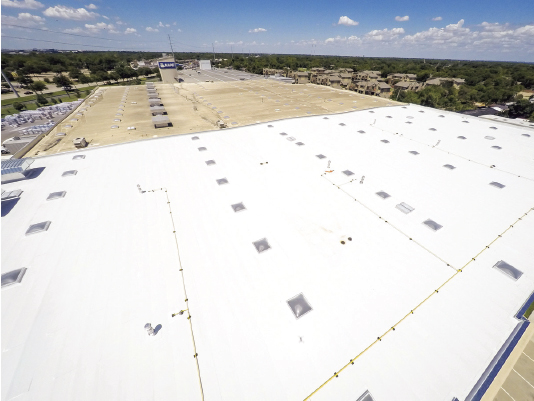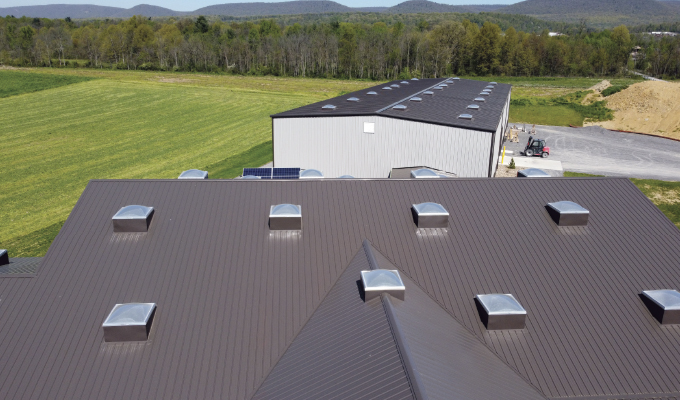Natural sunlight has long been known to be superior to any kind of artificial light source. It contains the full spectrum of colors and studies show that people are generally happier and healthier living, working, and shopping in sunlit environments. Although windows enable natural light to enter a building, organizations often use artificial lighting inside. Today, many seek to allow natural lighting to illuminate the interior.
As a result, business and warehouse owners are turning to daylighting systems to reduce and sometimes even eliminate the need for artificial lighting during the day. Daylighting systems, which passively harness and enhance the sun’s light, are not simple skylights. Rather, applying physics to standard glass domes facilitates and diffuses the light entering a building without harshness or glare. These energy-efficient systems can evenly illuminate building interiors of any size with pleasing daylight. The dramatic effect floods the space with bright light, enabling true color perception, which is crucial for selling many products.
Even with these tangible benefits, the contractor is usually focused on ease of installation and reliability. The contractor’s prime concern typically is “After the job, can I sleep at night without worrying about getting a callback [for leakage] after the first rain?”
After all, any penetration of a watertight roof membrane can introduce a potential pathway for water, which no one wants. So, contractors need exceptional trust that the systems they install will have a high level of leak-free integrity.

DAYLIGHT SOLUTION
In the industry, one reliable daylighting system, Campbell Hill, Illinois-based DayStar Skylight Systems, is specifically engineered for leak-free installation. Contractors make it clear to their customers that the installation process gives them confidence in its watertight integrity.
The DayStar system is composed of four parts. First, sunlight is gathered and diffused through an ultra-clear outer dome and inner collimation lens. A light shaft made of insulated panels with highly reflective interior surfaces amplifies natural light as it is captured. And finally, an attractive ceiling lens, engineered to diffuse highly concentrated light into a broad lighting pattern, is installed on the interior ceiling. The product comes in three common sizes, 2’x2’, 2’x4’, 4’x4’, although others are available.
As a general contractor for 30 years, Jonas Yoder, owner of JY Construction, has installed many natural daylighting systems.
“For natural lighting in roofing I wouldn’t think about installing anything but a DayStar system because the lighting and reliability is superior. It is a quality product that you can install without a leak. With other choices, you may get callbacks when they leak,” says Yoder.
According to Yoder, in other systems he has used the fiberglass construction is prone to distortion, which diminishes the natural light over time. In addition, when cracks emerge in the fiberglass, leakage occurs.
CUSTOM ROOF CURBS
One of the reasons for DayStar’s reliability is how the system is designed and engineered to prevent leaks. This begins with a properly installed essential roof curb that ensures the daylighting components have a level platform for attachment.
Rooftop curbs are raised metal frames designed for mounting structures safely to the roof. Typical skylights are comprised of a dome with pre-attached metal flashing, which the contractor cuts around to fit into an opening, and then seals with caulk. However, this arrangement is more prone to leakage. Some manufacturers rely on the contractor to find a supplier for a roof curb or even to create their own.
In contrast, DayStar’s insulated roof curbs are made of galvalume steel or aluminum, and feature continuously welded watertight seams. The curbs can be fitted to almost any roof pitch and metal rib design. The systems also come in regular slope and ridge-mounted versions. The company also supplies rib caps to fit the roof panel as well as the mastic sealant to be applied between the roof curb flange and roof metal. All these elements are crucial to DayStar’s unique engineering to create a well installed, leak-free system.

THERMAL EFFICIENCY
After concerns about potential water leaks, many contractors seek a system that will prevent outdoor hot or cold air intrusion, or transfer through the components. The challenge is that typical daylighting manufacturers utilize a roof jacket which incorporates a tube like an uninsulated stove pipe that allows hot or cold air to enter.
In contrast, DayStar uses an insulated roof curb, double-glazed top dome with a vinyl thermal barrier. The system’s insulated, enhanced light shaft and lens provide a 40-50% better thermal value than other daylighting designs. In addition, the system has a low solar heat gain coefficient (SHGC) as well as U Values (a measure of insulating performance) that are over twice the thermal efficiency ratings of common skylights. This means the customer will lose less heat in the winter and gain less heat in the summer.
“The [DayStar] daylighting system insulates against indoor heat or cooling loss better than any other system I have seen,” says Yoder.
CLOSING THOUGHT
According to Yoder, he originally installed 40 DayStar systems in a 24,000-square-foot, pre-engineered steel building about 10 years ago. “Now, the same, industrial warehouse customer looking to build another 9,000-square-foot structure with 12 more daylight systems. In my mind, that shows the system’s long-term value and reliability,” he concludes.
For More Information:
For more information on natural daylighting systems, email info@daystar1.com, or call 618.426.1868.
Modern Contractor Solutions, June 2023
Did you enjoy this article?
Subscribe to the FREE Digital Edition of Modern Contractor Solutions magazine.



